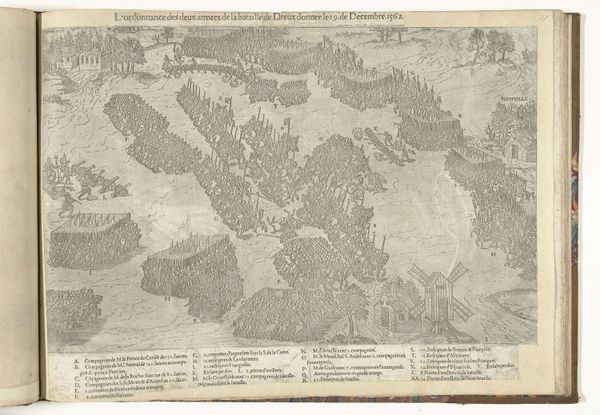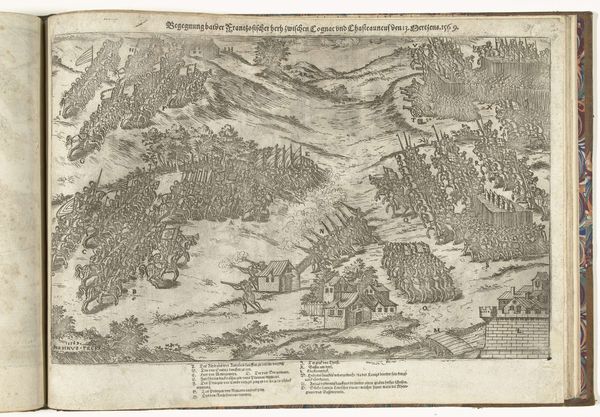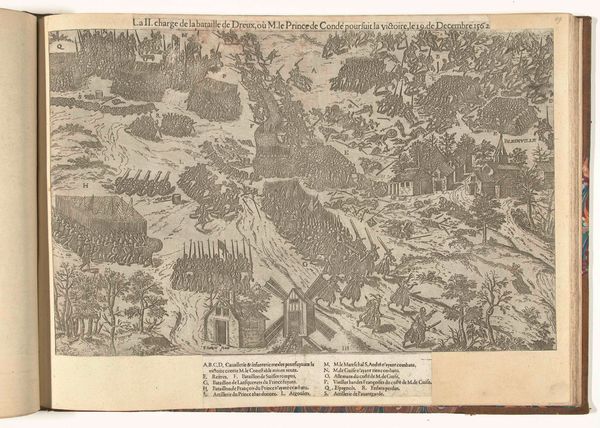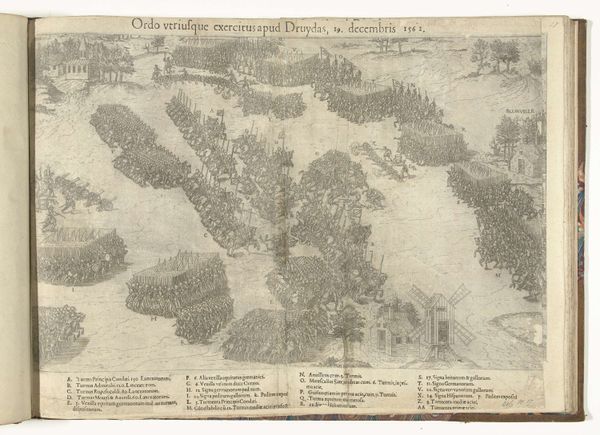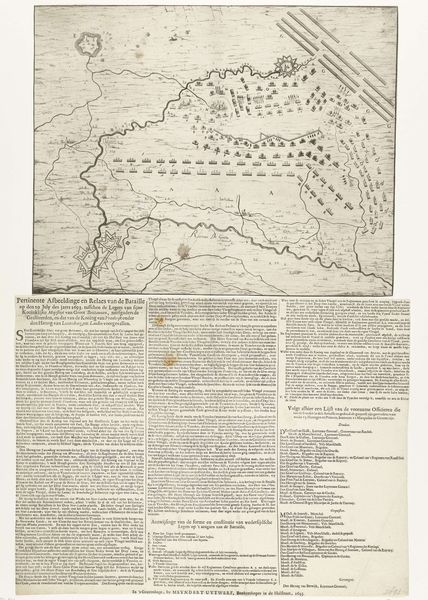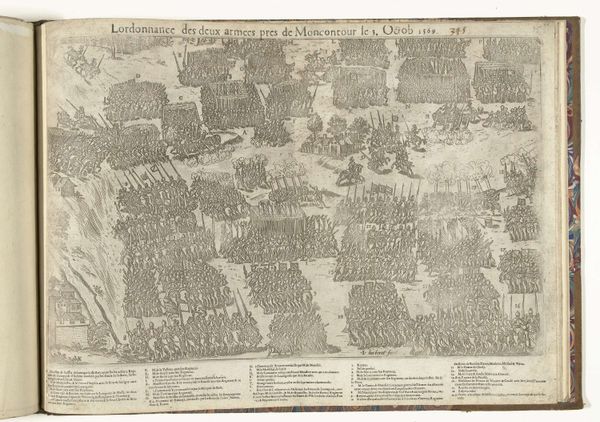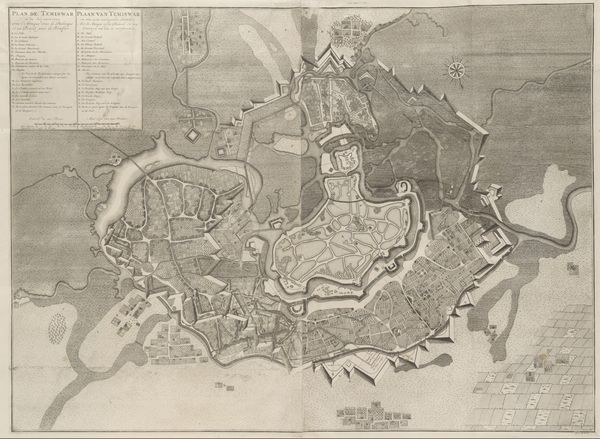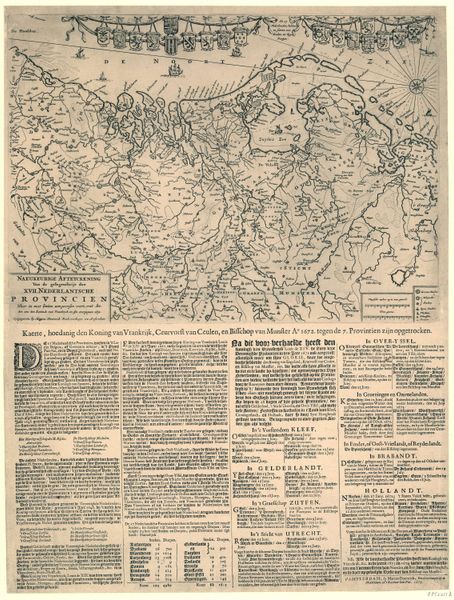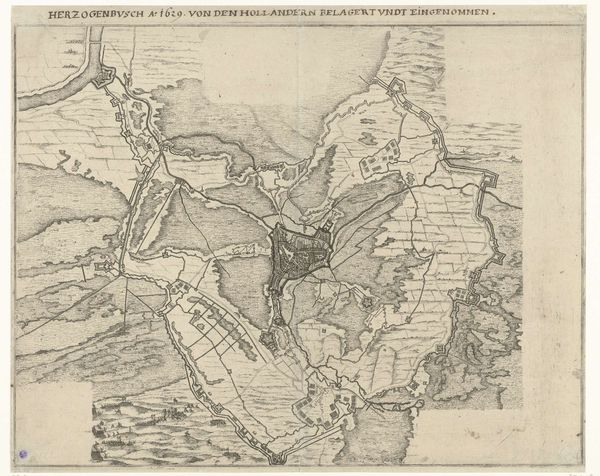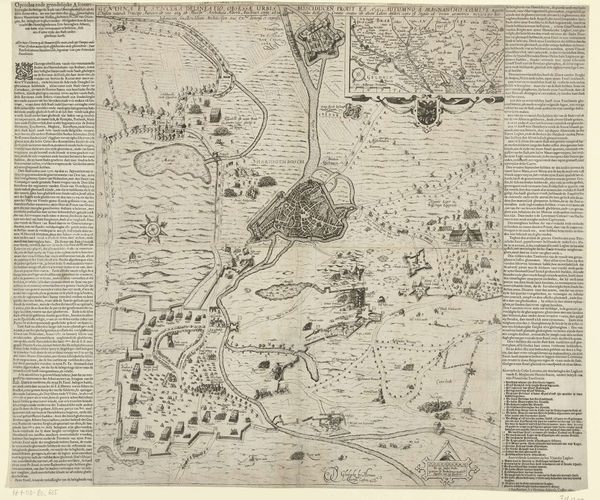
print, engraving
#
medieval
# print
#
history-painting
#
engraving
Dimensions: height 377 mm, width 505 mm
Copyright: Rijks Museum: Open Domain
Curator: What strikes me immediately is the overwhelming density of the composition. It’s incredibly detailed, a chaotic tapestry of tiny figures locked in combat. There’s a kind of dreadful beauty in the sheer mass of it all. Editor: This engraving by Jacques Tortorel depicts "The Battle of La Roche, 1569," dating from the late 1560s. This work exemplifies the visual strategies deployed during a period marked by intense religious and political conflict, particularly the French Wars of Religion. Curator: So it's more than just an aesthetic object; it served a purpose, politically? How did this print function within its historical moment? Editor: Precisely. These images served as a form of propaganda, shaping public opinion by representing events in a way that favoured one side over another. Notice how the artist positions the forces, creating a clear sense of order. What side, do you imagine, is positioned with greater visual strength and authority? Curator: That’s a keen observation! I would hazard the right; this segment features troops marching methodically in lines as if the opposing group to the left were merely being swarmed by haphazard zealots. How interesting that a snapshot, purportedly documenting real events, could be used to paint an obviously biased narrative. Editor: The depiction is not merely documentary; it’s deeply embedded within social power dynamics. Even the selection of scenes to depict becomes a deliberate choice to create certain symbolic connotations about these factions to either appeal to, or alienate, various demographics. It begs us to question: what narrative isn't being shown? Whose stories are being suppressed or skewed in service of a particular ideology? Curator: I agree, reflecting on who benefits from particular portrayals of warfare and resistance remains critical. It forces us to question not only historical sources but the ways visual culture is mobilized today, and who has the ability to define cultural narratives. Editor: Indeed. Tortorel's engraving is more than just an historical record. It stands as an incisive study of image manipulation, the construction of narrative through art, and how it directly interacts with audiences of its time, to then continue to echo throughout our own present.
Comments
No comments
Be the first to comment and join the conversation on the ultimate creative platform.
